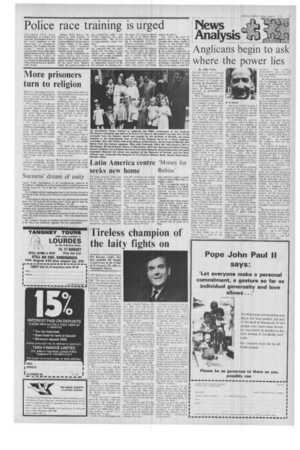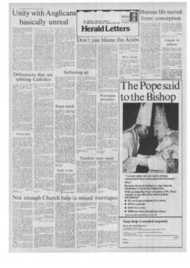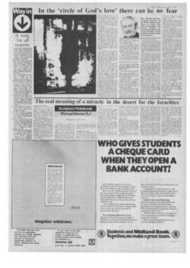Page 3, 3rd August 1979
Page 3

Report an error
Noticed an error on this page?If you've noticed an error in this article please click here to report it.
Tags
Share
Related articles
The First World War And The Brotherhood Of Man
First Layman To A Vatican Council Debate
I Catholic Profiles : I 091
Tribute For Laity's Champion Pat Keegan
Fathers Applaud Pat Keegan
'Tireless champion of the laity fights on
PAT KEEGAN talked to me non-stop for an hour and a half. This does not mean that hc is self-centered, because he is one of those people humble enough not to be bashful about their own actions. It is just 0 sign of the inexhaustible energy with which he has moved from one venture to another in the last 40 years.
An astonishing list of achievements has brought him the award of the Knight Grand Cross of the Order of St Gregory from Pope John Paul II. At the age o163 he directs Family and Social Action from a little room, where the damp comes through the unpapered walls, upstairs at the back of the same house in Clapham Road, Stockwell, from which he set about building up the Young Christian Workers in the late thirties.
"I am convinced that the work we've been doing is going to be a permanent part of the Church." he says. But the Pat Keegan of today is no more bowed down by the size of his tasks than he was when he was the first layman to address an ecumenical council. at Vatican II. Nor was he daunted by finding himself the international president of one and a half million Young Christian Workers in the fifties.
He is a homely man. with the air of a favourite uncle. He is every inch a Lancashire man, though he admits to being second generation Irish. As we talk, he moves restlessly in a little creaky armchair.
Whether in his involvement with workers or with families, Mr Keegan's great point has been that the Church is the people, not the officials and certainly not committees.
"There has been confusion about the apostolate of the laity by people with 'churchy' preoccupations. The lay Expostulate is a consequence of Baptism; they think it's an added extra. That's like sticking a plaster on a wooden leg," he says.
In the thirties Mr Keegan and
his fellow Young Workers, who gave three years full-time to spreading the ■sork of the association, sere pioneering new approaches to the liturgy. pastoral work and the laity.. "There was some lack of understanding by the hierarchy," he says,
"They thought supporting the laity meant you w ere anti-priest. If you talked about participation in the liturgy you were a cryptocommunist."
Although clericalism fought lay initiative. Mr Keegan soon found that there were a lot of good young priests who were tired of being curators of buildings when England was a missionary country, The mid-fifties saw the YCW established in Britain and the English speaking world under Mr Keegan's presidency. Ile was then quite happy to move on to work which Pius XII gave him.
"Pius XII had said that the Mass was the centre of the apostolic work. I said I agreed, but told him that most young workers couldn't get to Mass, in those days when there was no evening Mass. He really took that to heart."
Pius X11 appointed him to organise congresses of the laity in Rome. Three were held before the scheme folded. There were still misunderstandings at a time when some people still thought of a layman merely as someone who was not a priest.
This experience paid off in the years of the Vatican Council. Mr Keegan joined the first group of lay auditors to the Council. was the first layman to address it and worked op the commission working on the laity.
It was after Vatican II when he was on the Council for the Laity that he worked with Cardinal Wojtyla. He comments: "He's very comfortable in his priesthood. There's no edginess there and 114 understands his role as priest!) educator w it h lay people. But we didn't icd! diminished by his presence."
Here Pat Keeaan sees the ke■ to the proper relation between priest and people. "It's people who are not comfortable in their priesthood who are no good %kith the laity," he says. So, w ith the present crisis among priests, the YCW suffers.
Back in England again, Pat Keegan put all his energy into Family and Social Action, which provides services for family, house. parish or worker groups. As with the YCW, the stress is on action in small groups of ordinary. people, but this time the bishops have backed it from the first.
Mr Keegan's anxiety to make the Church present to people in their everyday lives has taken him from his work in a Wigan textile factory and driven him to travel the world and get in touch with millions of workers.
From the window of the Clapham Road room new flats stand where there were terraced houses. Mr Keegan in his sixties has no thought of retiring. He wants to activate those blocks of fiats from the inside.
I le sums it up in the words of Pius XII: "What is needed is the active presence, in factories and workplaces. of men and women who are fully conscious of their double vocation — as Christians and as workers,"
blog comments powered by Disqus











